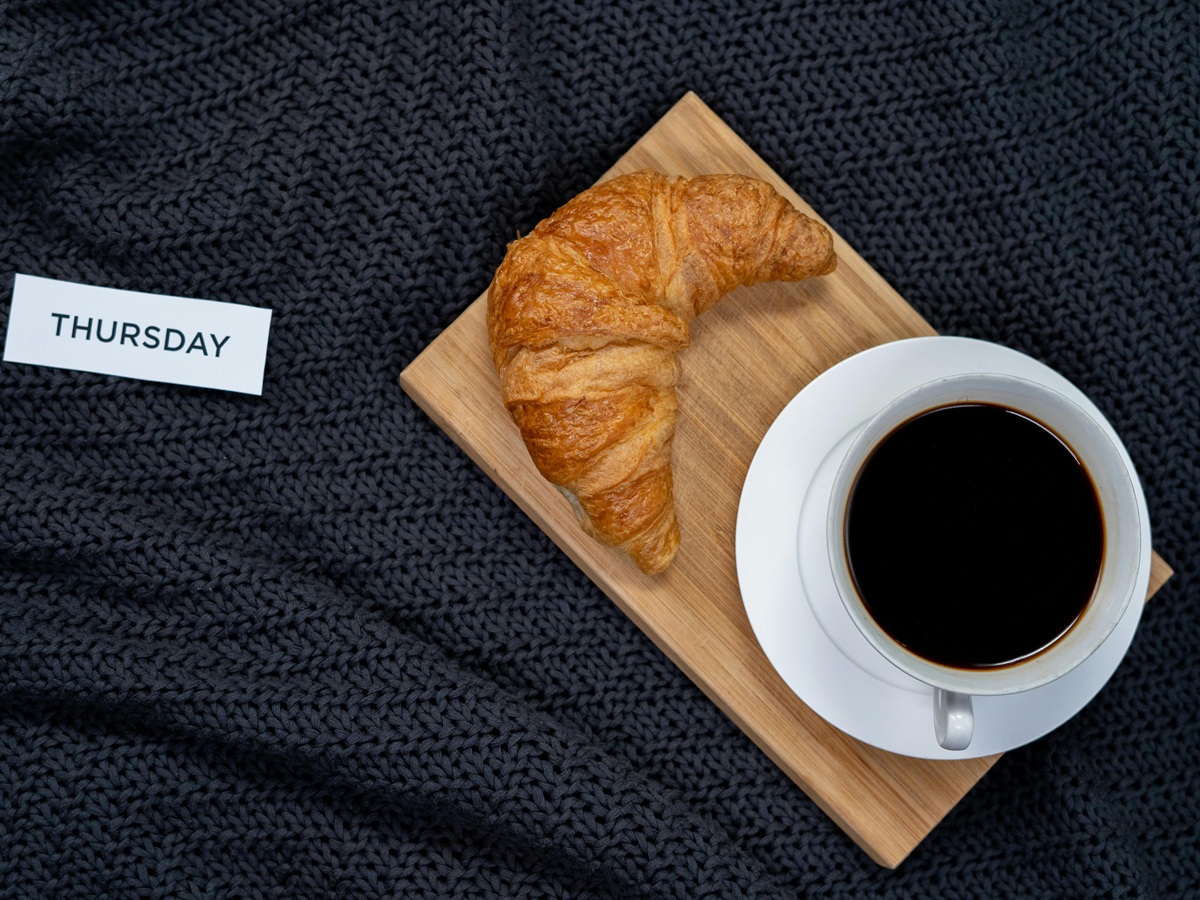- Aug 28, 2025
🥐 Le croissant : de Vienne à Paris et Culture Française
- Eliane
- French culture
- 0 comments
🥐 The Croissant: from Vienna to Paris and French Culture
A funny breakfast conversation about the crescent moon
Why is it called a croissant?
L’autre matin, au petit déjeuner avec une de mes étudiantes, nous avons eu une conversation assez amusante :
— « Tu as vu ? On voit la lune très clairement ! »
— « Ah oui, un beau croissant ! »
— « Quoi ? »
— « Oui, ça s’appelle un croissant de lune ! »
— « Oh mais c’est pour ça que le croissant a cette forme-là ? »
— « À vrai dire, c’est parce qu’il a cette forme-là qu’il s’appelle comme ça ! »
🗣️The other morning, during breakfast with one of my students, we had a funny little exchange:
— “Look! You can see the moon so clearly!”
— “Yes, a beautiful crescent!”
— “What?”
— “Yes, it’s called a crescent moon!”
— “Oh, so that’s why the croissant has this shape?”
— “Actually, it’s because of its shape that it’s called that!”
Ce petit moment m’a poussée à me pencher plus sérieusement sur l’origine du croissant, cette viennoiserie qui symbolise tellement la culture française et que l’on associe souvent au petit déjeuner français.
Et devinez quoi ? Son histoire est liée à… Vienne, en Autriche ! (D’où le nom de “viennoiserie”)
🗣️That playful conversation made me curious about the real origin of the croissant. After all, it has become one of the biggest symbols of French culture and the classic French breakfast.
Surprisingly, the croissant’s story begins in… Vienna, Austria! (Hence the name “viennoiserie”)

The legend of 1683: bakers, Ottomans, and the first Kipferl
Vienna under siege and the alert of the bakers
En 1683, lors du siège de Vienne par les Ottomans, ceux-ci tentèrent une nuit de s’introduire dans la ville par un souterrain. Mais dans l’ombre, des boulangers travaillaient déjà à leurs fournées. Les apercevant, ils donnèrent l’alerte et permirent de repousser l’assaut.
🗣️In 1683, when the Ottomans besieged Vienna, they tried to sneak into the city through an underground tunnel at night. Fortunately, some bakers were working late and noticed them. They raised the alarm, helping to repel the attack.
A pastry shaped like the Ottoman crescent
Pour commémorer cette victoire, ils auraient alors créé une pâtisserie en forme de croissant de lune, symbole visible sur le drapeau ottoman. Ce petit pain s’appelait à l’époque le Kipferl.
🗣️To celebrate the victory, the bakers created a pastry shaped like the crescent moon, a symbol from the Ottoman flag. At the time, it was called a Kipferl.
August Zang and the Parisian success of the croissant
From Kipferl to the French buttery croissant
Plus tard, en 1839, August Zang, un boulanger viennois, ouvre une boulangerie à Paris. Il y introduit cette viennoiserie, qui rencontre un immense succès. Les boulangers français, inspirés par ce pain, créent leur propre adaptation : un feuilletage beurré, doré et délicat. Ils le baptisent tout naturellement « croissant », en référence à sa forme.
🗣️Years later, in 1839, a Viennese baker named August Zang opened a bakery in Paris and introduced the pastry. The French loved it so much that bakers adapted the recipe, turning it into the buttery, flaky delight we know today. They gave it a very fitting name: the croissant.
How the croissant became a symbol of France
Aujourd’hui, le croissant est sans doute l’un des symboles les plus connus de la culture française dans le monde entier. Mais en réalité, il est né d’un mélange d’influences européennes !
🗣️Today, the croissant is probably the most famous icon of French culture around the world. Yet its roots are truly a mix of European influences!
👉 À lire aussi sur le blog :
French breakfast culture and French immersion in Occitanie
👉 Si vous aimez ce type d’anecdotes culturelles et que vous voulez les vivre au quotidien, rejoignez-moi en immersion linguistique en Occitanie. Rien de mieux que d’apprendre le français autour d’un vrai petit déjeuner français, avec un croissant tout chaud ! Découvrez le programme ici : Easy French with Eliane - Immersion en Occitanie.
🗣️ If you love these cultural stories and would like to experience them in real life, join me for a French immersion in Occitanie. There’s nothing better than learning French while enjoying a real French breakfast with a warm croissant! Discover more here: Easy French with Eliane - Immersion in Occitanie.